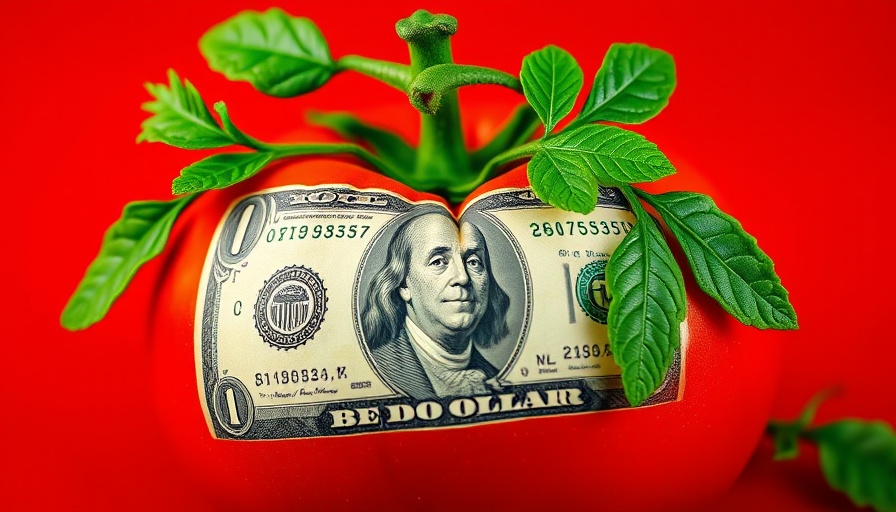
Understanding the New Tomato Tariff: What You Need to Know
The recent implementation of a 17 percent duty on fresh Mexican tomatoes marks a significant shift in U.S. agricultural policy, with potential consequences that may impact your grocery bill this summer. This tariff, designed to protect domestic growers in the face of what they label unfair competition, could see tomato prices soar by up to 10 percent. For digital nomads and food enthusiasts alike, understanding this change can enhance your culinary experiences and dining choices.
The Cultural Significance of Tomatoes
Tomatoes are more than just a staple ingredient; they are central to various cultural cuisines—as essential as ‘salsa’ in Mexico or ‘marinara’ in Italy. The changes in tomato imports directly affect food culture, cooking practices, and even dining out experiences in the U.S. As import costs rise, so too may the cost of your favorite dishes.
A Closer Look: Historical Context and Background
Historically, Florida has been the backbone of U.S. tomato production. However, the 1990s marked a turning point when NAFTA allowed Mexican producers to penetrate the market, offering tomatoes at much lower prices due to favorable growing conditions and labor costs. This period heralded a decline in domestic production, sparking protests from American farmers who argue that Mexican tomatoes are sold below market value, disrupting fair competition. The complexity of these trade relationships illustrates the intricate ties between agriculture, economics, and cultural identity.
Potential Impacts on Cooking and Food Culture
As Mexican tomatoes represent a staggering 70 percent of fresh tomatoes consumed in the U.S., changes in availability and pricing will undoubtedly shift how we cook. The vibrant flavor profiles we expect during the summer months may become less accessible, leading to home cooks seeking alternative ingredients or adjusting recipes. The potential to use less flavorful Florida tomatoes—picked green and ripened artificially—could detract from the overall dining experience. As food culture adapts, it will be fascinating to see which innovative culinary techniques emerge to fill the gap.
A Conversation Starter: Diverse Perspectives
While many welcome the protectionist measures aimed at boosting U.S. farmers, others warn of the potential downsides such as increased grocery bills and limited options for consumers. Chefs and home cooks might need to become more resourceful, embracing local markets or seasonal produce while finding creative alternatives that maintain taste without breaking the bank. This discourse underscores the broader conversation about sustainability in food sourcing, a topic often emphasized within wellness communities.
What Does This Mean for You?
For digital nomads and culinary explorers, the food scene might require a new level of adaptability. Focusing on local produce and creative cooking practices can help you maintain delicious, healthful meals. Freezing, canning, or exploring alternative sources can mitigate the impacts of inflation on your food budget, while maximizing flavor from whatever fresh produce you can find. Engaging with local chefs or farmers can also enhance your connection to community food systems and sustainability.
Take Action: Empower Your Culinary Choices
With these upcoming changes, now is the ideal time to embrace your culinary creativity. Explore your local farmers' markets, engage with other food enthusiasts on social media, and experiment with new recipes that highlight seasonal ingredients. Not only can you reduce expenses, but you may also discover new favorites that enhance your health and well-being.
So next time you reach for that tomato, remember the story behind it. Make informed choices that reflect your values as a food lover and conscious consumer, and inspire others to share in this journey.
 Add Row
Add Row  Add
Add 




Write A Comment